How to Find A Good Groomer
Grooming is an essential part of our pets’ health and hygiene. Pets with healthy, clean coats are happier animals! While some dogs and cats are easy to bathe and brush at home, others need regular trips to the groomer.
Here are some tips for finding the best groomer for you:
Ask for referrals
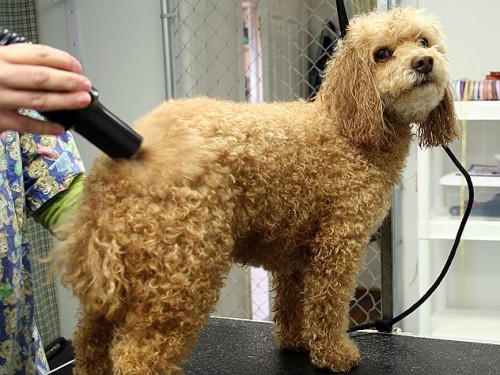
The Internet is also a great tool to do research. Many sites, such as Petfinder’s Local Service and Supplies listings, allow users to leave reviews — a great tool for research.
Your veterinarian may also be a great resource for finding a groomer. Using a groomer that both you and your veterinarian trust is ideal.
A good grooming facility will require vaccination papers from your vet. This helps to ensure that your pet will not contract any disease or infections from other animals at the facility. Regardless of a vet-recommended groomer, you should always leave the contact number of your vet in case of an emergency.
Questions to ask
Everyone wants to know that the groomer has your pets’ safety in mind. Find out if your town requires groomers to be licensed. This ensures that a groomer adheres to certain guidelines. When doing your research, don’t forget to ask the groomer if she is licensed.
Ask your groomer what her policy is if an accident occurs. It is crucial that your groomer be honest and let you know if anything occurs while you left your pet in her hands.
While accidents, such as cuts, scrapes and burns, can happen anywhere, it is important to check your groomer’s credentials first. Look into past accident reports or client complaints whenever possible.
What to look for at the grooming facility
Take your pet with you for a tour of the facilities before your pet’s first grooming appointment. This will give you an opportunity to see how the groomer interacts with other pets and you can ask other pet owners about their experiences with the groomer.
Your pet should become somewhat familiar with the place, and you should feel comfortable leaving your pet there. Be sure that pets are never left unattended while on the grooming table or in the tub.
While visiting, introduce yourself and your pet to the groomer and staff. This will help to make the next visit easier on your pet. Be sure to check that the facility is clean and equipment is sanitary.
What to tell your groomer
You need to discuss any health issues that your pet may have with your groomer. If your pet has specific skin problems, your veterinarian may want your groomer to use a certain shampoo on your pet.
Typically, veterinarians will not want a pet to visit the groomer if they have just undergone a surgical procedure — especially if they have stitches. Be sure to ask your vet about grooming restrictions after any veterinary procedure.
Your groomer is there to help keep your pets’ skin, ears and nails healthy and in good condition. They can be a great resource for noticing ear infections and other skin related issues, which you can then discuss with your veterinarian.
Homemade Dog-Grooming Table
Choosing a Homemade Grooming Table
Making your own grooming table allows you to customize the table to your dog. Therefore, you should be aware of your dog’s grooming needs before building one. You also should consider how often you will use the table, where it will be stored and how portable you need it to be. Next, take into consideration the safety features you will need and any additions you would like to make for your dog’s comfort. Finally, take your own skills into consideration. Once you have decided on all of these things, you will be ready to make your table.
Full-Sized Grooming Table
If you have a medium-sized to large dog, you will want a full-sized grooming table. These tables usually are constructed with a sheet of good-quality plywood for the tabletop and a set of banquet table legs for the base. For the safety and comfort of the groomer, the table corners frequently are rounded. For the safety and comfort of the dog, the tabletops usually are covered with grooved rubber matting or textured rubber. This covering usually is glued to the tabletop and secured with metal edging. Keep your dog’s size in mind when purchasing table legs. It is better to have a lower center of gravity when designing your table, to offer more stability if your dog moves around while grooming. It is possible to use a pipe cutter to trim some length from the feet of metal banquet table leg kits to achieve the correct table height.
Ringside Grooming Table
Smaller dogs often are more comfortable, as well as easier to groom, on a smaller grooming table. Known as “ringside” grooming tables because of their frequent use at dog shows, these small tables are lightweight and portable. They often are made by gluing rubber shelf liner to the top of wooden television trays and securing the edges with tape or lightweight metal. Rubber feet may be added to the legs of the table for additional security and to prevent the table from wobbling.
Grooming Arm
A grooming arm provides your dog with a sense of safety when he stands on the table. The arm is made from two pieces of metal conduit, formed into the shape of a capital L using elbow conduit. It is secured to the table with a C-clamp. Using a C-clamp rather than a hand clamp allows you to adjust the height of the grooming arm, which is helpful if you have more than one dog. Hang a grooming loop or harness from the end of the grooming arm using a threaded eye bolt inserted into the end of the conduit.
How to Choose a Dog Grooming Table That Suits Your Needs
Size of Dogs Being Groomed
A grooming table must allow a dog to stand and recline in comfortable positions without giving him too much room to move around. Commercial grooming tables are frequently 18 or 24 inches wide and 30 to 48 inches long; however, sizes can vary between manufacturers. If you will be grooming dogs of different sizes, choose a table that takes the comfort of the largest dog into consideration. A small dog grooming table, which typically consists of a round, rotating tabletop on a frame with a nonslip base, is suitable for use with toy- and small-breed dogs. It can rest on top of any counter or table to make grooming a small dog more comfortable for both parties involved.
Size of the Groomer
A grooming table should be appropriate for the height of the groomer in relation to the size of the dog. The table should bring your dog up to approximately the level of your waist, to prevent bending or stretching while brushing, combing or attending to ears or nails. Grooming tables with adjustable legs allow you to groom dogs of different sizes. They also permit you to stand or to sit while grooming. Hydraulic grooming tables can be expensive. Regardless, they are worth the investment if you need assistance lifting a dog onto the table or if you will be grooming often. You can adjust a hydraulic table even with the dog in place.
Construction and Portability
Your table should be sturdy enough to withstand the weight and energy of your dog. A lightweight wooden fold-up table would not stand up to use with a Siberian husky, even if the dog would fit on top: Its base would wobble and the tabletop would eventually buckle or crack. By the same token, a 5-pound dog does not need a table with all-metal construction. Sometimes, portability is important. If you will be keeping your table at home, a well-made, slightly heavy table might be the better investment. If you will be traveling with it, however, a folding table constructed of lightweight metal or wood is ideal.
Frequency of Use and Storage
If you have more than one dog or if your dog requires frequent grooming, you may prefer to keep your grooming table set up all the time. In this case, you will want a table that fits into the space you have set aside for grooming. If you will be grooming infrequently, a table that suits the size of your dog and folds to store under a bed or in a closet is likely more appropriate.
More on Dog Anal Gland Care
You might have seen one of the many videos online where a dog is scooting his butt across the floor in a most humorous way. Not only is it unfair to the dog, who has no idea millions of people are laughing at his expense, it’s also a sign of a potentially serious problem – infected anal glands.
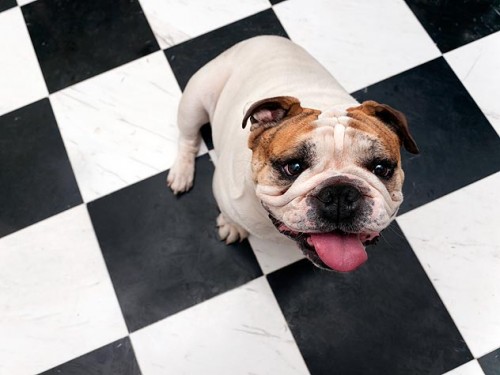
Anal glands are a dog’s calling card — they emit some fluid when pressured by urinating or defecating and that same fluid has your dog’s own unique smell. They can also release the smell when a dog is excited, as when meeting another dog. If the glands aren’t expressed naturally and regularly, they become impacted which can lead to infection or even a rupture.
Regular Care of the Anal Glands
Some dogs never have a problem with their anal glands so it’s up to you to be aware of the warning signs. The famous scoot across the floor is a good indication that your dog needs his anal glands expressed. Other signs are a fishy odor around your dog’s behind or soft stool.
The Role of Nutrition
By feeding your dog quality dog food with fewer cereal fillers, he will likely produce firmer stools, which will naturally express the anal glands. Be sure to check with your vet before starting any supplements.
Having a Professional Express the Glands
This is really recommended as an expert is less likely to hurt your dog and can do it quickly and efficiently. You can bring your dog to the vet to get the glands expressed when you notice a sign that they’re impacted. You can also bring him to a professional groomer. A groomer is a good choice because she likely sees your dog every few months and, thus, there’s less time that the glands are going unchecked.
Doing It Yourself
This is not recommended, but if you have no other option but to express the glands yourself, here are some simple instructions. The key is to be calm, prepared, and as quick as possible as this is not a pleasant experience for your dog. First, locate the glands. They are at about five and seven o’clock on either side of his anal opening. Next, wearing latex gloves, apply firm but gentle pressure to the glands. Hold a warm cloth over the opening to prevent a squirt of the nasty fluid. Some fluid should be expelled from the opening. Do not repeat the process; simply wipe your dog with the washcloth and reward him.
Dog Oral Health and Care
The good news is that cavities are rare in dogs. The really bad news is that more than 80 percent of dogs over the age of three have gum disease, and among dogs adopted from shelters and rescue groups the percentage is closer to one hundred.
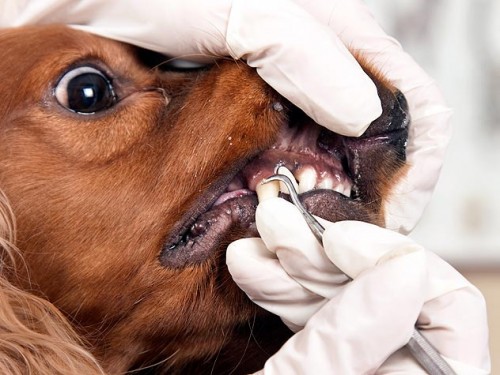
If he has other problems that need attention, they could be addressed at the same time. Although relatively expensive, regular professional dental care will make your dog feel better and keep his breath more pleasant for you to be near. Most important, good dental hygiene may prolong your dog’s life, because infected gums release bacteria into the bloodstream that can attack organs throughout the body.
Teeth cleaning is done under general anesthesia to give your vet free access to your dog’s mouth. Your vet, or her assistant, will remove tartar and plaque, and then polish your dog’s teeth. She will check for loose or damaged teeth, which may need to be removed or repaired, and for other signs of trouble. Different dogs need their teeth cleaned with varying frequencies, so be sure to talk to your vet about this.
There’s more to doggy dental care than vet visits. Between professional cleanings, bacteria cluster along your dog’s gum line. The bacteria form plaque, which hardens into tartar (calculus) if it’s not removed.
Tartar irritates the gums, causing gingivitis and periodontal (gum) disease characterized by abscesses, infections, and tooth and bone loss. To prevent or slow this destructive process, you need to brush your dog’s teeth.
Ideally, you should brush them every day, but every two or three days will go a long way toward preventing gum disease. Use toothpaste made for dogs — toothpaste for people can make your dog sick if he swallows it — and apply it with a brush designed for dogs, or a finger brush, or a small disposable dental sponge, whichever you find easiest.
Keep an eye out for signs of oral problems, including red, puffy gums; sudden or prolonged and copious drooling; swelling or lumps; ulcers and sores on the lips, gums, tongue, or other oral tissues; tenderness around the mouth; damaged teeth or tissues; inability to eat, or obvious discomfort when doing so; and foul breath. The sooner you catch a problem and bring it to your vet’s attention, the better for your dog and, probably, your wallet.
In addition to a good dental care regimen, you can help keep your dog’s mouth and teeth healthy by feeding him high-quality food, and by providing him with safe chew toys that help clean his teeth and gums.
The more you can do to remove plaque and tartar from your dog’s teeth between veterinary visits, the less frequently your dog will need to undergo a veterinary dental treatment. Since the procedure involves anesthesia — which is never without some risk — and can be costly, it’s in your and your dog’s best interests to follow a regular dental health regime at home.
DIY Dog Tear Stain Remover
Thoroughly mix equal parts corn starch, milk of magnesia, and hydrogen peroxide to make a creamy paste. The amount you will need depends on the size of your dog, but about a teaspoon each should be enough to get you started.
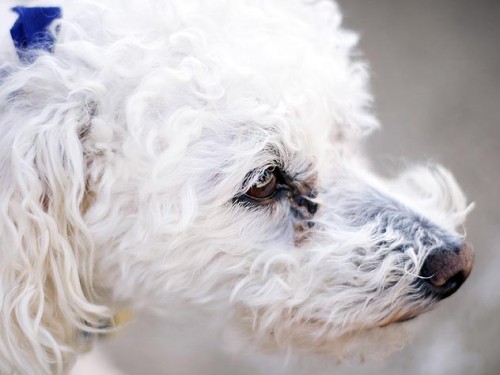
Keep your dog’s head still, and let the paste stay on his fur for ten to twenty minutes, then wash it out thoroughly. You may want to condition the bleached fur after this process, as it may be brittle. You can repeat this process, as necessary, every couple of days until the stains are removed.
If you cannot easily keep your dog still for the ten to twenty minutes needed for the solution to work, do not risk this method as the solution could get in your dog’s eyes.
How To Clean a Dog’s Ears
Even though we give them lots of good scratches, when it comes to grooming, the ears of dogs are frequently the most neglected parts of their bodies. But their ears are also one of the most important areas to attend to. Ear infections can be serious, and can begin easily if an animal’s ears are not kept clean. After all, how will Biffer know when to start salivating if his ears don’t pick up the sound of kibble hitting his bowl? Make sure your furry guests keep their ears perked up by following these simple steps.
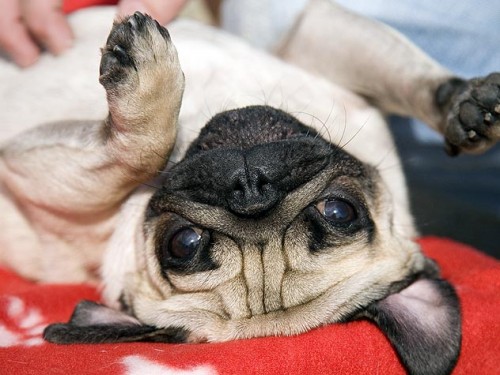
Be careful! If the dog’s ears have an offensive odor, or if he has been scratching them repeatedly, you should not remove the icky stuff that might have accumulated; whatever’s there can help your vet determine the cause of the “ear-itation” and figure out how to treat it. So if he’s scratching, or if you’re tempted to plug your nose while cleaning his ears, you should turn the task over to your veterinarian or veterinary technician first; she can take swabs of the substance for examination.
2. Ear We Are
Before you start your scrubbing, make sure you’ve set the table. You should have your supplies set out and ready to go. Put out your cotton balls and cleanera commercially prepared ear cleaner with a low alcohol content is best. Wash your hands thoroughly so you don’t introduce any infectious particles to the dog’s ears. You may want to work with a buddy; your friend can provide distracting pats while the ear cleaning takes place.
3. Wipe Out!
Once you’ve determined that your dog’s ears are merely dirty and not full of mites or infection, you can remove the dirt. Using a cotton ball moistened with mineral oil, gently wipe out the inner surface of the animal’s earflap. Discard the first cotton ball and moisten another; with this one, clean out the part of the ear canal that you can see. Stop when you feel resistance-don’t try to stick the cotton ball any farther into the ear than it should go. Repeat this process on the other ear. Make sure you remove any foreign matter, whether it’s dirt, bugs, or just waxy buildup.
4. Ears to You!
Give your furry friend a pat, give your helper a high-five, and send your little buddy on his way. Now he’ll be well-prepared to hear those wonderful words:
“Look, honey, he’s beautiful! He’d be a wonderful new member of our family.”
“Oh, you’re right. And his ears are so clean!”





